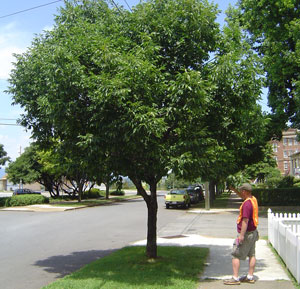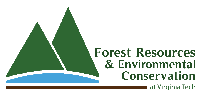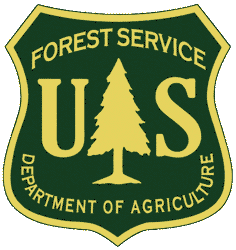 The Virginia Street Tree Assessment Project is collaboration between the Virginia Tech Department of Forest Resources & Environmental Conservation and the Virginia Department of Forestry. The goal of this project is to improve our understanding of the abundance, composition, and benefits of municipal street trees throughout the Commonwealth. Since 2008, project collaborators have partnered with over twenty Virginia municipalities to inventory and assess their street trees.
The Virginia Street Tree Assessment Project is collaboration between the Virginia Tech Department of Forest Resources & Environmental Conservation and the Virginia Department of Forestry. The goal of this project is to improve our understanding of the abundance, composition, and benefits of municipal street trees throughout the Commonwealth. Since 2008, project collaborators have partnered with over twenty Virginia municipalities to inventory and assess their street trees.
Why Street Trees?
Street trees are arguably the most vital component of the public urban forest. Typically situated in the public right-of-way between the edge of roadway pavement and adjacent private property, these trees can provide a range of important social, economic, and environmental benefits, including:
- Safer and more comfortable walking environments
- Reduced urban traffic speeds
- Greater shopping and tourism activity
- Increased real estate value
- Longer pavement life
- Less stormwater runoff
- Lower air temperatures and energy costs
To enjoy these benefits, communities must be willing to invest in the proper selection, planting, and maintenance of street trees. Poorly designed planting spaces, inappropriate species, and limited preventive maintenance contribute to unhealthy street trees and diminish their value for communities. However, research has shown that properly managed street trees provide up to $3 in annual benefits for every $1 invested in their care (McPherson et al. 2005).
To maximize street tree value, communities must first understand their abundance, composition, and benefits. A street tree assessment provides information necessary to set management objectives and create management plans. For example, if an assessment reveals that a particular tree species accounts for a substantial proportion of the street trees, then the community might adopt a tree-planting plan that promotes species diversity. This is just one example of how communities are using these street tree assessments to improve their urban forests.
Locality Reports- lists all participating localities in a summary table and has links to locality reports and data.
Resources- contains information on the street tree assessment methods; and links to online tree selection tools and the National Tree Benefits Calculator.
Assess Your Trees- has resources to get you started with tree assessments in your neighborhood or community.
Collaborators- contains information about the organizations and people involved in this project.
About Us- this page has information on the Urban Forestry program at Virginia Tech.
In the News
8/6/12 WVTF radio: Millions of trees in this country have already been ravaged by the Emerald Ash Borer
3/12/12 Virginia Department of Forestry: Trees Provide Annual Services Worth $6.6 Million in Just Five Communities


